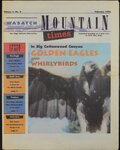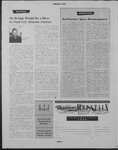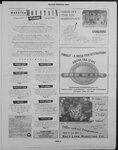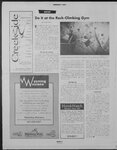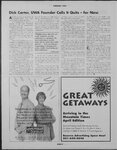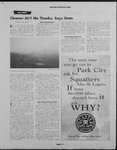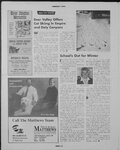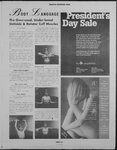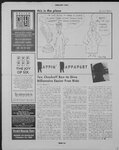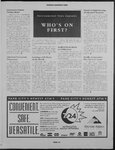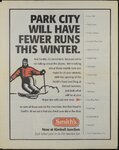| OCR Text |
Show WASATCH MOUNTAIN TIMES Cleaner Air? No Thanks, Says State State Sounds Alarm By Christopher Smart Recently, Si officials may not really want cleaner air along the Wasatch Front. The federal Environmental Protection Agency (EPA) has been making noises about changing the way it measures air pollution. - That has Utah Air Quality officials of the Utah Russell Roberts, Division director of Air Quality sounded the alarm, saying a new EPA standard could force driving restrictions along the Wasatch. The new standard would measure particles smaller than 2.5 microns and would be known as “PM 2.5.” with the federal highway funds that state officials are working in an attempt to keep EPA from adopting air quality standards that would be too onerous “We, as a state, are very active in this process,” McNeill explained. “We are on several councils that supply information to the EPA... .” Small Group Spoils Air A small number, perhaps 5 percent, of the cars on the road account for about 40 percent of the air pollution, according to Professor Donald Steadman, University of Denver. Steadman has invented a device, similar to Photo Cop, that identifies polluters as they drive down the roadway and catches them on film has But rather than use his device, EPA instituted a program, in some places, called IM 240. It is believed this inspection system will also be coming to Wasatch Front counties for auto air pollution inspections. “If 5 percent of the cars are causing 40 percent of the pollution, why test 95 percent of the cars?” Steadman asks. Why, indeed. Utah has used Steadman’s device in a pilot project in Utah County. There are no plans, however, to institute the pollution equivalent of Photo Cop here, largely because state officials know they must The next time you go out in Mountain Salt Lake Valley during climbing the walls for fear that tighter pollution standards would throw Utah out of compliance with the national Clean Air Act. And that would mean that federal highway-building funds would not be forthcoming. All this as Gov. Mike Leavitt and the Utah Department of Transportation unveil a plan to widen Interstate 15 from six lanes to 10 in the Salt Lake Valley — a proposal estimated at $1 billion. If L.A. is any example, that only means more cars and more air pollution. No matter how many freeway lanes were built in L.A. during the last 30 years, they all filled up with bumper-to-bumper traffic, yielding the worst air pollution in the country. he crux of the issue in Utah surrounds what is called particulate pollution — tiny particles floating in the air. The EPA now measures any particle smaller than 10 microns as pollutants. In’ air pollution lingo, that is called “PM 10” pollution. In mountain valleys in the west, like Salt Lake Valley and Utah Valley, PM 10 is responsible for the dirty air we see. It is also what causes health prob- lems, most notably in youngsters and the aged. And most of the PM 10 in this area now comes from automobiles. During the past 15 years, Utah industries have spent about $1 billion on air pollution controls. During the same period, automobiles have become much cleaner, too. But the population explosion along the Wasatch Front has kept the air dirty, albeit just in compliance with federal Clean Air standards. Times Photo winter “inversion.” Horror of horrors, drivers could be forced into van pools or onto the bus, Roberts told local news media. A BYU Economics professor, C. Arden Pope, is a leading researcher who believes that it is the smaller particulates that cause health problems and most of the visible air pollution. PM 2.5 pollution is small enough to enter the lungs and even invades our homes, Pope explained in a Mountain Times interview. “The bottom line is that the scientific perspective is to concentrate on what is causing the damage,” he said referring to PM 2.5. New Standard Too Costly? During winter months 60 to 80 percent of our PM 10 air pollution is made up of particles smaller than 2.5 microns (PM 2.5), Pope explained. That is precisely what is causing panic in state Air Quality officials: If EPA increases its clean air standards to measure PM 2.5 at the same level it now measures PM 10, Utah would lose federal dollars or force autos to run a lot cleaner, said Dave McNeill, a state Air Quality manager. ‘If EPA were to implement this standard the way they implemented PM 10, it would cost a lot of money,” he said. “We would require cars to be a lot cleaner.” On the other hand, EPA could adopt the PM 2.5 at a standard level that would allow for the same air quality we now enjoy (or disdain). “It could do nothing,” McNeill noted. But Utah is concerned enough PAGE ask for Park City Squatters Ales & Lagers. If please EPA for the highway funding. And EPA, as yet, has not endorsed Steadman’s machine. @ your favorite place , doesn’t have 1¢ |
